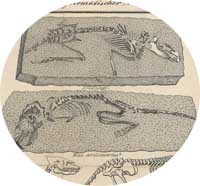
|
|
Fossils of mammal skeletons
Top: Didelphis (Opossum)
Bottom: Muscardinus avellenarius (dormouse)
Back to main image |
|
|
|
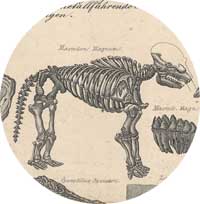
|
|
American Mastodon skeleton and tooth
An extinct species related to elephants and mammoths, first described by Georges Cuvier in 1817.
Back to main image |
|
|
|
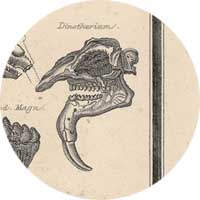 |
|
Skull of a Dinotherium giganteum
Illustration of a specimen found at Eppelsheim, 1836. In his reconstruction of the physiology of the Dinotherium, William Buckland suggested that it had a proboscis similar to that of the modern tapir. Modern reconstructions suggest that the proboscis more closely resembles the trunk of an elephant.
Back to main image
|
|
|
|
|
|
Skeleton of a Palaeotherium
An extinct mammal, described by Georges Cuvier in 1804 as being similar to a modern tapir. However recent studies suggest that the creature did not have a proboscis and instead is more closely related to the horse.
Back to main page |
|
|
|
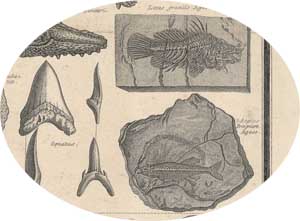
|
|
Fossil fish and shark's tooth
Specimens of the fossil fish Lates gracilis Agassiz and Aspius Brongniarti Agassiz, and a shark's tooth, all from Louis Agassiz's 'Recherches sur les Poissons Fossiles’ (1833-1844).
Back to main image |
|
|
|
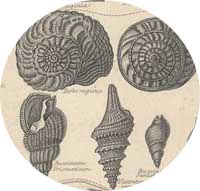
|
|
Pliocene shells
Typical shells from the Pliocene epoch, taken from Charles Lyell’s ‘Principles of Geology’ (1830-1833).
Lyell based his divisions of the Tertiary period (Eocene, Miocene and Pliocene) on the abundance of fossil molluscs found in various strata.
Back to main image |
|
|
|
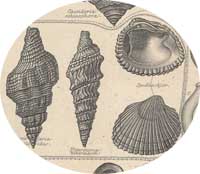 |
|
Miocene shells
Shells characteristic of the Miocene epoch , taken from Charles Lyell’s ‘Principles of Geology’ (1830-1833).
Lyell based his divisions of the Tertiary period (Eocene, Miocene and Pliocene) on the abundance of fossil molluscs found in various strata.
Back to main image |
|
|
|
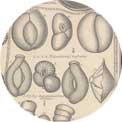 |
|
Eocene shells
Microscopic shells from order of Cephalapoda, Paris Basin, taken from Charles Lyell’s ‘Principles of Geology’ (1830-1833).
Lyell based his divisions of the Tertiary period (Eocene, Miocene and Pliocene) on the abundance of fossil molluscs found in various strata.
Back to main image |